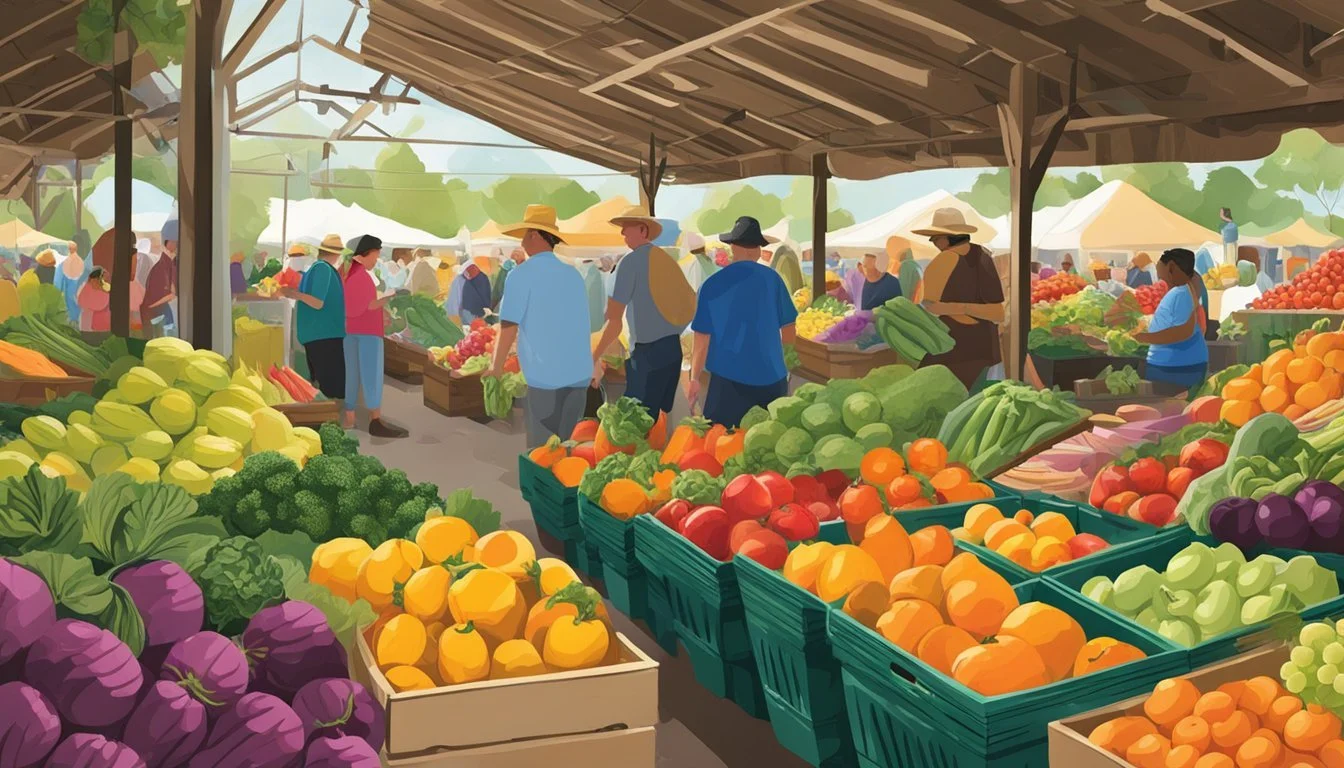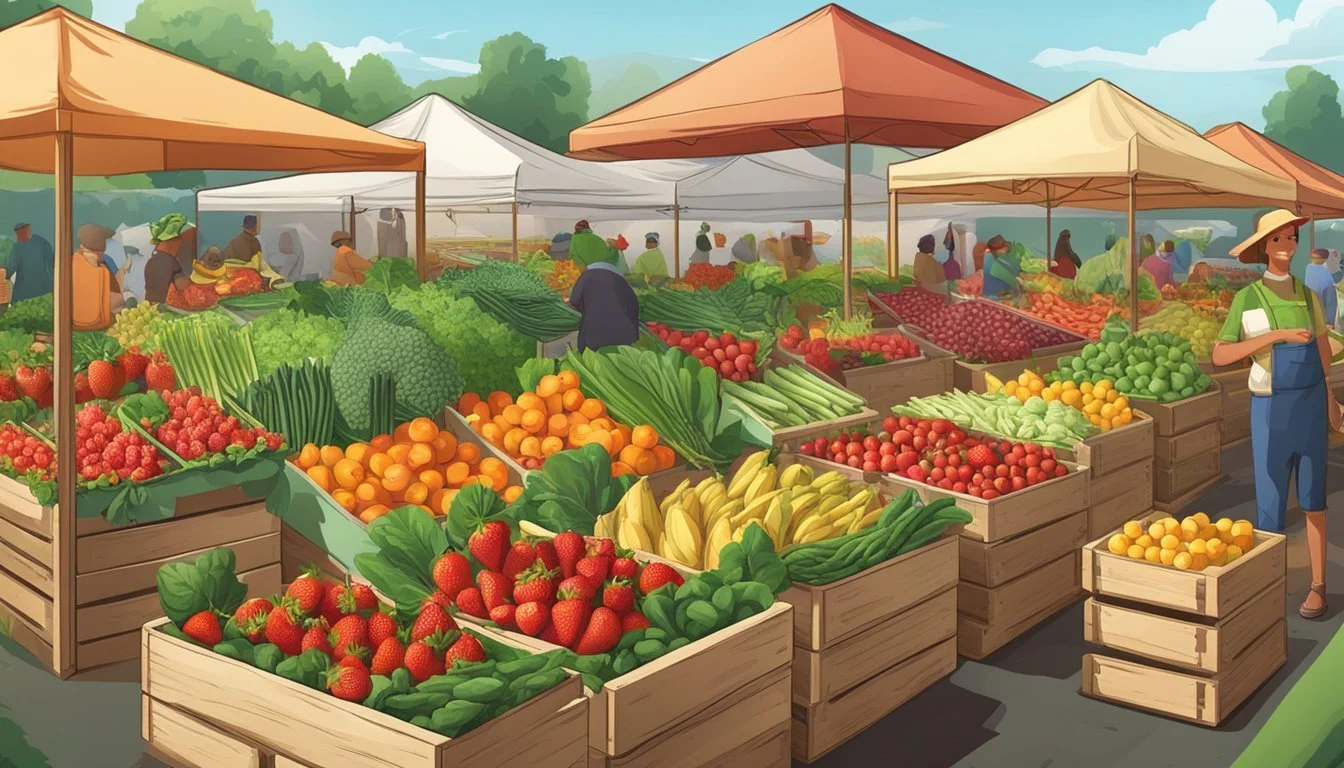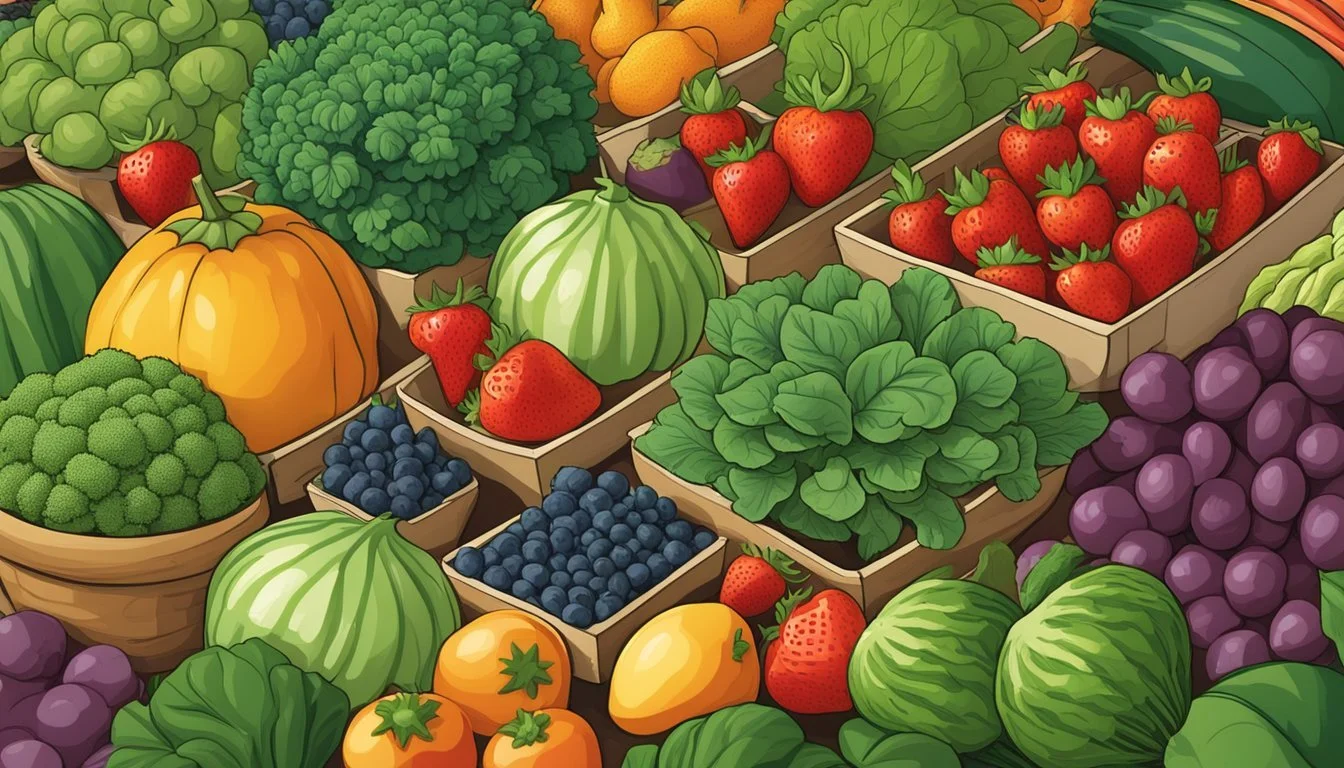North Carolina Seasonal Fruit & Vegetables in March
Your Fresh Guide
This Article is Part of our North Carolina Seasonal Fruit & Veg Calendar
March in North Carolina ushers in the early signs of spring and with it comes a variety of fresh produce that starts to fill the farmers' markets and grocery aisles. This is a transitional period when the last of winter's bounty meets the first tender offerings of spring. The state's diverse climate and soil types contribute to a wide range of fruits and vegetables that become available during this month.
Produce such as leafy greens like chard enjoy an extended season, often beginning in March and lasting through to the colder months. Root vegetables and hearty greens that have been winter mainstays begin to make room for the arrival of springtime favorites. Asparagus (how long does asparagus last?), a perennial favorite, marks the arrival of spring with its peak season beginning in March. It is joined by crisp radishes and a variety of lettuces, including romaine, which also make their seasonal debut, offering fresh flavors and textures to the palate.
North Carolina's agriculture is rich and varied, providing a bounty of seasonal fruits and vegetables that can enhance any meal with freshness and nutritional value. Residents and visitors alike have the opportunity to incorporate these seasonal ingredients into their cooking, taking advantage of the peak flavors and nutritional content that comes with produce harvested at its best.
Overview of North Carolina's Growing Seasons
North Carolina's agricultural landscape is marked by distinct seasonal shifts, which allow for a wide variety of fruits and vegetables throughout the year. The state's farms adapt to these changes, cultivating crops that thrive in varying conditions from the spring warmth through the chill of winter.
Spring Harvest
During the spring months, North Carolina farms burst into action. Asparagus, a springtime favorite, starts to become available as the weather warms, offering its fresh, tender spears. Strawberries also begin to ripen, filling the local markets with their sweet, vibrant flavors. Farmers focus on a range of greens, including spinach and lettuce, allowing for fresh salads packed with nutrition.
Summer Bounty
Summer in North Carolina brings an abundance of sunshine and heat, fostering the perfect environment for tomatoes, blueberries, peaches, and corn. These staple summer crops reach their peak during this season, delivering the freshest taste and maximum nutrient content.
Fall Varieties
During the fall, as temperatures start to cool, North Carolina's farms herald in the harvest of apples, pumpkins, and sweet potatoes. Kale also becomes a predominant crop, thriving in the chillier weather and enriching autumnal meals with its hearty leaves.
Winter Crops
Winter's cooler temperatures and fewer daylight hours don't stop North Carolina farmers from producing quality vegetables. Collards and turnips can withstand the cold, while sweet potatoes, stored from the fall harvest, continue to be available, providing sustenance and versatility for winter meals.
March Availability in North Carolina
March in North Carolina ushers in a transitional period for fresh produce, as winter wanes and hints of spring begin to emerge.
Vegetables in Season
During March, one can find a variety of leafy greens thriving in the cool, yet gradually warming climate. This includes kale and spinach, which maintain their vibrancy and are packed with nutrients. Shoppers will also find lettuce, essential for spring salads, with its crispness signifying its freshness. Root vegetables such as carrots (how long do carrots last?) are still widely available and offer a sweetness intensified by the colder preceding months.
Fruits to Look For
While March is not the peak season for a wide assortment of fruits in North Carolina, there are still some gems. Shoppers may start to see the first harvests of strawberries towards the end of the month, signaling the start of their peak season. These early berries tend to be particularly flavorful due to the concentration of natural sugars developed from the cool nights and warmer days.
Locally Grown Produce Benefits
Locally grown produce in North Carolina provides substantial benefits in terms of nutrition and local economic support. Consumers have access to fresher fruits and vegetables while contributing positively to their community.
Nutritional Value
Local produce often arrives at markets with higher nutritional quality due to shorter transport times. Fresh produce picked at its peak retains more vitamins and minerals, which can degrade during long transit periods. For instance, leafy greens and berries lose their optimal nutritional value within days of harvest. Consumers in North Carolina benefit from these nutritious products when they purchase from farmers markets or directly from the farm.
Supporting Local Farms
Purchasing locally grown fruits and vegetables directly supports North Carolina's agriculture sector. Every dollar spent at a local farmers market stimulates the local economy by circulating within the community and helping to maintain the viability of local farms. This economic support encourages sustainability and growth within the state's agriculture industry, ensuring a future for farm-fresh goods.
By choosing local produce, consumers in North Carolina not only reap the benefits of high nutrition but also nurture their local economy and community.
Where to Find Seasonal Produce
In North Carolina, March brings a variety of seasonal fruits and vegetables to the market. Shoppers can source fresh and often organic produce to support local farmers and the community.
Farmers Markets
Farmers markets are the go-to spots for the freshest selection of March produce. Shoppers can find items such as broccoli (how long does broccoli last?), romaine lettuce, and an assortment of leafy greens. They can interact directly with local farmers, inquire about farming practices, and experience a vibrant community atmosphere. Markets usually operate on specific days of the week, so it's advisable to check their schedules ahead of time through platforms like Facebook or Twitter for updates.
Local Community: Strong engagement with the seasonal offerings.
Fresh Produce: Direct from farm to shopper.
Shopping Experience: Dynamic and interactive.
Grocery Stores and Co-ops
For convenience, grocery stores and co-ops offer a wide selection of March produce, often including organic options. These stores may source from local farms, ensuring freshness and quality. Shoppers can look for labels indicating local or organic to make informed choices.
Organic Options: Readily available for the health-conscious shopper.
Local Produce: Support local agriculture when available.
Online Marketplaces
Online marketplaces are increasingly popular for busy consumers seeking seasonal produce. They provide ease of access to local goods with the added benefit of delivery. Platforms such as Facebook Marketplace or dedicated websites enable shoppers to buy directly from producers or through community-supported agriculture (CSA) programs.
Convenience: Shop from home and support local farms.
Community Supported Agriculture: CSAs that can be found via social media like Facebook, Pinterest, or Twitter.
How to Select and Store Fresh Produce
Selecting and storing fresh produce correctly is crucial for maintaining its freshness and nutritional value. One should always look for the freshest crop, handle it gently, and store it under proper conditions to maximize its quality and lifespan.
Vegetables
When selecting vegetables such as broccoli and kale, they should have a vibrant color and firm texture. Broccoli should feature tight, dark green florets, while kale leaves should be free from brown spots and wilting. For storage, both broccoli and kale prefer cool and moist conditions. They should be stored in the refrigerator, with broccoli in a plastic bag with air holes, and kale in a damp towel or a perforated bag.
Carrots should be firm and smooth without any cracks or soft spots. Refrigerate carrots in a plastic bag and ensure they remain dry, as moisture can lead to spoilage. To prolong their shelf-life, one could also trim their greens.
Fruits
For fruits like strawberries, a key indicator of freshness is a bright red color and a natural shine, with the cap still attached. They should be plump and free of mould. Strawberries are best kept in their original container or a paper towel-lined container covered with plastic wrap in the refrigerator; they should be washed only just before consumption to prevent spoilage.
It is important to note that while these measures can extend the shelf life of fresh produce, they should ideally be consumed within a few days of purchase to enjoy their peak flavor and nutritional benefits. Proper handling and storage of each product are pivotal to preserve quality and ensure safety.
Preparing Seasonal Produce
In March, North Carolina offers an abundance of seasonal produce that provides ample opportunities for nutritious cooking and preservation. Utilizing these fruits and vegetables can contribute to a balanced diet and allow for a variety of culinary explorations.
Simple and Healthy Recipes
Kale: This leafy green is rich in vitamins and can be used in dishes like sautés and smoothies. For a quick meal, one can toss chopped kale with olive oil and garlic, sautéing until tender, often paired with a protein of choice.
Carrots: Carrots are versatile and available year-round. They can be roasted with herbs or shredded into a carrot salad dressed with a vinaigrette.
Strawberries: Peaks in late spring, but can sometimes be found in March. They're excellent in fruit salads or can be mashed into a puree for dressings and desserts.
Preservation Techniques
Storage:
Kale and carrots should be kept in the refrigerator to maintain freshness.
For strawberries, one should remove any spoiled berries, keep them in their original container, and refrigerate.
Canning:
Strawberries can be preserved as jams or syrups.
Carrots might be pickled or canned in a pressure canner for later use.
Freezing:
Kale can be blanched and frozen for smoothies or winter soups.
Strawberries should be hulled, laid on a baking sheet to freeze individually, and then stored in bags, retaining their shape and nutrition.
By applying these methods, one can extend the enjoyment of March's bounty throughout the year.
Frequently Asked Questions
What fruits and vegetables are in season in North Carolina during March?
Broccoli
A variety of leafy greens such as chard
These items provide a rich source of nutrition, including vitamins, minerals, and dietary fiber.
How much water do these seasonal produce items generally need?
Broccoli and romaine lettuce are typically water-intensive crops. They require consistent moisture for optimal growth, so farmers pay close attention to water management, especially during dry spells.
Are there any simple recipes for March produce?
Certainly! March produce is diverse and can be used in various recipes:
Broccoli can be steamed or stir-fried.
Romaine lettuce works well in fresh salads or as a wrap.
Chard can be sautéed with garlic for a nutritious side dish.
What's the nutritional value of March seasonal produce?
These vegetables are nutritionally dense. Broccoli is high in vitamin C and K, Romaine lettuce offers vitamin A and potassium, and chard is a good source of iron and magnesium. They contribute to well-rounded nutrition during the season.







